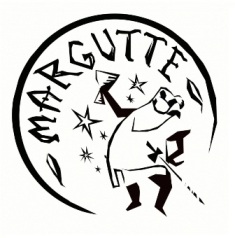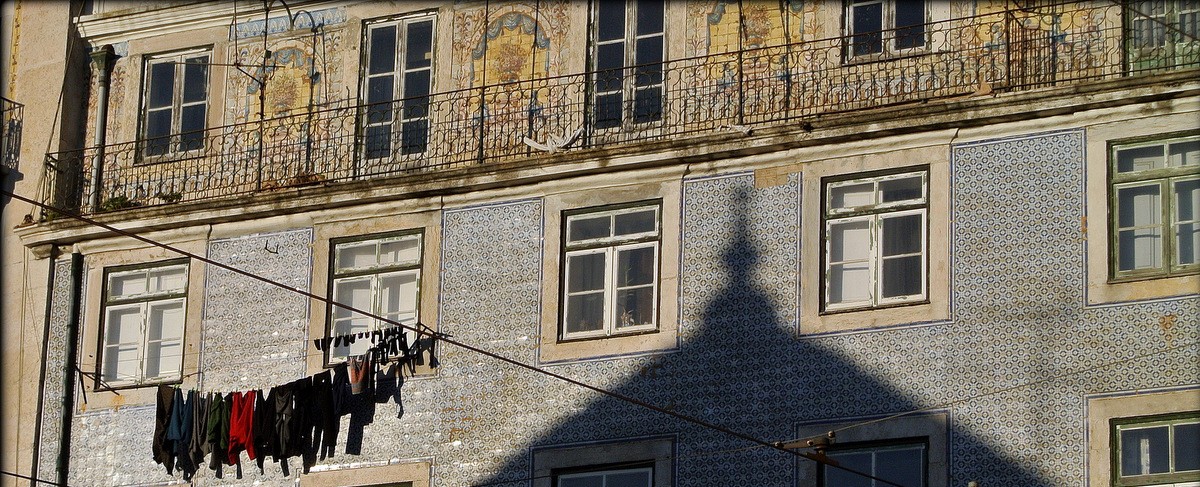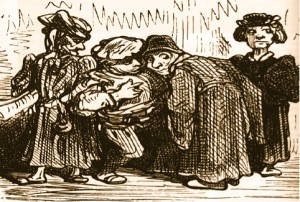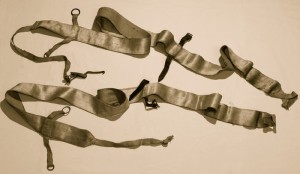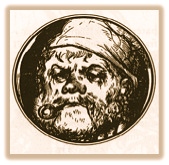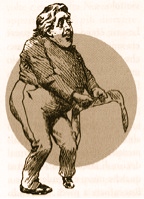SILVANO GREGOLI.
THE 60s, VALL’ELLERO
The Dwarves of Norea!
Whenever I think back to that remote spring morning, I feel a disturbing sensation of disbelief. Did it really happen?
Yet the story unfolds from a beam of initial certainties.
The first certainty concerns the place: Norea, a small cluster of houses almost at the bottom of the Vall’Ellero. We never stopped there for long. Norea was made to be left behind, with its icy bridge on river Ellero, the inevitable sawmill and the looming mountains that obscured part of the sky. Actually I don’t remember how I got there with backpack and skis. Maybe Corrado had brought me on board his Guzzi Super Alce motorcycle that he always drove without gloves, even in winter. Another certainty is that from Norea up I was going to be alone and that, alone and for the first time in my life, I would have experienced the charms offered by that amazing accessory for ski-mountaineering currently known as the sealskins or, simply, the skins.
I had never put on sealskins before, but the operation went pretty well. The tip rings, the side straps and the straps of the tail assumed obediently the proper configuration. The skis so prepared, I booted them in a moment. Apart from a few tumbles, down a steep bank in the area of the Passionisti, this was really my first experience on skis. And it was going to happen uphill.
Here I am, at the start of the deep tracks, now icy, left by the skiers who went to the refuge Mettolo Castellino the day before. «Just follow our tracks» I had been told «and you will reach the refuge without problems».
The snow was as hard as iron and through the ice transparency I could see pebbles and blades of grass. The tracks were bumpy and, despite the sealskins, the skis made sounds of wood slamming. I still remember the suspicion with which I laid my skis on the rails, the unnatural and almost otherworldly feeling that the skis did not slide backwards, the growing confidence, the first bold steps…
I knew nothing of the trail ahead: the road from Norea to Baracco, the steep slopes before reaching the Pine pass, the infamous grove – snow-covered jungle of alders and small beech trees – the surge towards the Selletta, the progressive and tiring rise along the big rump of Pian della Tura until reaching the Trucca, from which, with a short glide, I would have finally arrived at the refuge.
The beginning of the trail was straight and steep, and each time I looked back, Norea seemed more and more distant. I had probably walked one kilometre when, suddenly, the abnormal slamming of one of the skis woke me up from daydream. The front strap was cut all the way trough and the ski swerved slightly. It was to be expected: caught between the sharp edge of the ski and that of the icy groove, the canvas of the strap parted. It was the first time I was in such a situation and I told myself that the sealskin would hold up. Proceeding with caution, I had just done a few more steps when the front strap of the other ski was also cut. The set was still working: the ring tips were still anchored, the tail buckles pulled enough. Did I walk another twenty meters? Fifty? One hundred? Now it was one of the ring tips to surrender and the sealskin pulled back like the old skin of a shedding snake. With a supreme effort I leaned on the other ski, still holding, the weight of my body entrusted to the sticks. But the situation was untenable and so, a few seconds later, I collapsed on the icy ground.
Altogether, I had walked one kilometre and the situation was desperate. The front straps and a ring tip were cut off. The others were all tattered or reduced to a trickle. The tail straps were no better: the icy edges of the rails had torn them up. If, by some miracle, I could have kept walking for another two or three hundred meters, all the links set up to keep the sealskins adhering to the ski would have gone to pieces. The situation was simple: the outing was over, I had to turn back. And so I did, angry and demoralized at the idea of returning home. Who knows how.
In Norea I encountered someone – here my memory becomes vague: man, woman, old, young? What I remember is a gesture in the direction of a group of houses and the word cobblers. Sombre and angry I walked in that direction banging without precaution skis and poles against the walls of the narrow streets.
The streets were deserted, the village lifeless. No dog, no cow, no smell of manure: only heaps of snow petrified against the facades of the stone houses. The possibility of finding a cobbler in that abandoned place seemed to me so remote that I had already decided to leave the skis somewhere and reach Roccaforte on foot, hoping to find a ride to Mondovì. Once arrived in the proximity of one of the last houses, I saw a dim light coming from the basement, and a warm breath exhaling from the stairwell that sank beneath the frozen snow.
«Is anybody there?» I yelled into the darkness, closed by a door on the other side of which I seemed to discern clues of life. «A-i é-lo chéic-un? Oooh?»[1]
The handle began to move. The door, swollen with moisture, finally opened and at the bottom of the stair appeared a dwarf. The dwarf climbed the steps covered with dirty ice, reached the head, looked at me – from bottom to top, of course – and came out with a series of incomprehensible words. No doubt: he was a cobbler, wrapped as he was in a dark leather apron, all scarred with cuts and holes.
I showed him the sealskins and the straps dangling miserably. The dwarf, whose hands were dark and thick as the leather of his apron, immediately began to stir and smile in a succession of movements, sudden but gentle. He went down the stair and disappeared into the darkness of the hallway. Having reached the door he turned back and said something to me that I still remember and which seemed like: «Vinu avècchi: parts peri-peri suìt»[2]. I did not understand, but his whole body was telling me to follow him, that he would look after me, that it was not difficult, that tears and lacerations will be repaired.
The door opened onto a large room from which came a quiet warmth. Two other dwarves, stout and nimble as the first, came close and whispered passing from hand to hand the sealskins that they watched with amusement. One of the dwarves, with a particularly prominent forehead, said, «Roumiage dur, eh! PAF with lou cul: Paf , Paf , Paf!» then laughed loud slapping his head with his hands.
Now my eyes had adjusted to the darkness, and what I saw instilled in me a sense of peace and trust. The large room
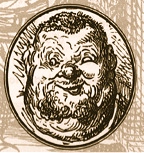 was a real cobbler workshop, equipped with four tiny desks: the fourth was for the little lady dwarf who, at that time, was fumbling around the stove with a saucepan.
was a real cobbler workshop, equipped with four tiny desks: the fourth was for the little lady dwarf who, at that time, was fumbling around the stove with a saucepan.
This scene of the three dwarves in consultation around the wreckage of my sealskins revealed the different temperaments. One was joyful and never ceased to throw mocking glances. Another was definitely smaller than his colleagues: perhaps this is why he gave off a sombre gloom. The third – the one whom I met outdoors – looked like the chief. His convivial skips and dartings aimed perhaps to give confidence to the few customers. While the joyful dwarf rummaged in a basket, the sombre dwarf had begun to unpick the old canvas straps shaking his big head in disapproval. At one point, spurting malice from every pore, the joyful dwarf approached me  holding a piece of soft leather and fanned it under my nose laughing: «Pùm con lou cul! Ha, ha, ha! Roumiage dur: pàf pàf pàf!» he said; and laughed, and laughed. «Bel e fin, eh, lou roumiage con lou cul». Then, hopping and writhing around, he walked to his cobbler’s bench with the piece of leather in his hand.
holding a piece of soft leather and fanned it under my nose laughing: «Pùm con lou cul! Ha, ha, ha! Roumiage dur: pàf pàf pàf!» he said; and laughed, and laughed. «Bel e fin, eh, lou roumiage con lou cul». Then, hopping and writhing around, he walked to his cobbler’s bench with the piece of leather in his hand.
The work of the dwarves continued in a peaceful silence, broken only by grunts, snorts and bursts of laughter. The sombre dwarf had stripped the sealskins and was showing them to the boss who examined them carefully. Fiddling with scissors, the joyful dwarf had obtained from the piece of leather a bunch of tapes that, no doubt, were intended to replace the old canvas straps. Looking at me, he rubbed the bunch on his nose and hummed: «Pierìn pelìn, chemin picìn, dur con lou cul: paaaf!». He stared at me, and laughed. During a short break announced by the lady dwarf we all sipped, very loudly, a mug of chicory extract, black as hell.
I wondered if the lady dwarf was beautiful. I wondered if the dwarfish aesthetic was the same as ours. Who knows how 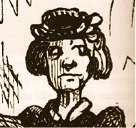 old she was. She could have been sixty, or maybe twenty. I wonder if the joyful dwarf was her brother, or husband, or father, or son. The important fact was that the lady dwarf, after discussing with the dwarf leader had taken the situation in hand and begun to pass in review sealskins and leather straps. Finally, she uttered some high-pitched sounds, like the screech of a bird in anger, and the joyful dwarf rushed, visibly upset. «Pinìn veri, prestu lou coràm balicàn!» she hissed. No, the work was not well done! At least half of the strips had to be made again. And the joyful dwarf spun, contrite, to his stool to scrape the tapes too thick. I thought to approach and tell him between my teeth: «Vitàsa dura eh! Pùm con lou cul: pàf, pàf, pàf!» but I let it go, also because the sombre dwarf approached me to observe the quilted lozenges of my anorak.
old she was. She could have been sixty, or maybe twenty. I wonder if the joyful dwarf was her brother, or husband, or father, or son. The important fact was that the lady dwarf, after discussing with the dwarf leader had taken the situation in hand and begun to pass in review sealskins and leather straps. Finally, she uttered some high-pitched sounds, like the screech of a bird in anger, and the joyful dwarf rushed, visibly upset. «Pinìn veri, prestu lou coràm balicàn!» she hissed. No, the work was not well done! At least half of the strips had to be made again. And the joyful dwarf spun, contrite, to his stool to scrape the tapes too thick. I thought to approach and tell him between my teeth: «Vitàsa dura eh! Pùm con lou cul: pàf, pàf, pàf!» but I let it go, also because the sombre dwarf approached me to observe the quilted lozenges of my anorak.
The preparatory phase was nearing completion; the joyful dwarf had repaired the wrongdoing and had handed over the work to the lady dwarf who was already heading to her workplace. No doubt: she was the stapler. Others cut, unpicked, scraped, pulled, pierced, hammered, pasted, fixed eyelets. But the stapler was the lady dwarf and the dwarf boss controlled the work from a distance, sure of the quality of the result.
The sealskins, completely refurbished, were finally handed over to me by the group of smiling dwarves. The only embarrassing moment was when I asked the bill: I had only a few coins in my pocket. The question was met with laughter, smiles, and hops. No, it’s nothing, answered the dwarves with all their eyes, with all their hands, with the language of all their bodies, and the joyful dwarf, turned jolly again, slapped his backside with hilarity: «Roumiage dur dins lou bosc, Sarvàn; prend-te gardo del pàf sur lou cul!» he shouted to me on the threshold.
I was beginning to understand their dwarfish dialect, but I did not need it anymore. I emerged in a world of warm light and the mountains around called me in their own language, clear and assertive.
The assembly of the sealskins was magic, and magic were the first steps, quick and silent. I walked the distance I had walked previously, in a few minutes. Norea had moved away visibly. The altitude contours paraded under my skis like in a dream. What? Was I already at Baracco? I breathed the enchanted air of the morning with my mouth wide open and my legs pushed the skis up like pistons.
How come the straps of the dwarves had held? Was it the leather of seven leagues? Who gave the snow such a creamy consistency, my legs such a lightness? Was it due to the chicory extract? Was the lady dwarf a wizard? It was not the first time I passed through Norea, but I had never seen the dwarves. Was I living in a miracle?
Or maybe it was all because of that big one, up there: that round, yellow and happy sun, popped out from behind the Monte Moro, that had turned the sharp ice into soft ice cream, good for sealskins, skis, legs, heart and soul?
P.S.
In 2010, after 50 years of absence, I returned to Norea: there was a dwarf near the fountain.
Yes: they were three brothers and a sister. All shoemakers.
They lived there: and he pointed with his finger to an old house, not far away.
He was alone now.
A few years later the last of the dwarves also died.
The modest saga of the Dwarves of Norea is about to enter oblivion. The short story written above (and entrusted to the WWW) is probably all that will remain of them.
***
The original version of this story appeared in the magazine: Alpidoc 45, march 2003, pp 52-57.
Two earlier versions of the story appeared in: Silvano Gregoli, E laggiù, Mondovì, Edizioni Il Belvedere, Mondovì 1990 and id., Alpi Liguri primo amore, CDA & Vivalda editore, Torino 2004
***
HERE the Italian version
HERE the French version
(click on the tag “Silvano Gregoli” to read others articles of and on Silvano Gregoli)
